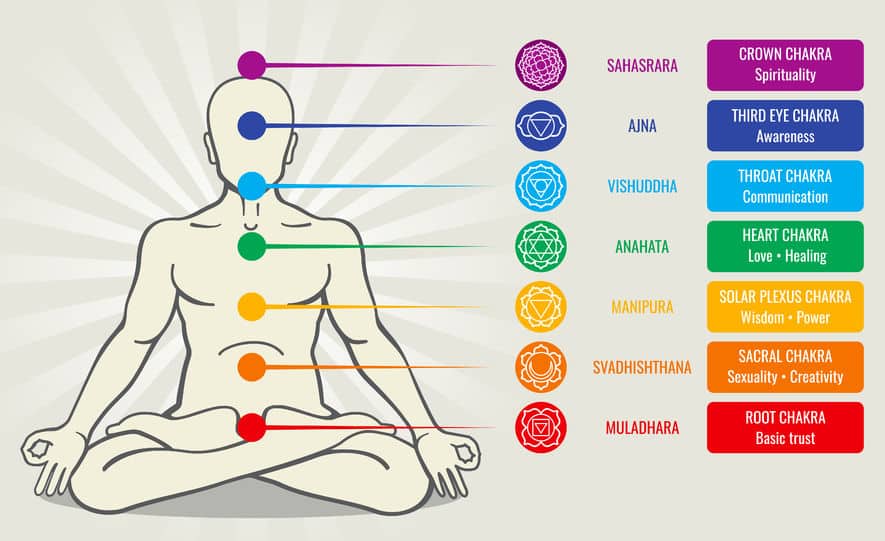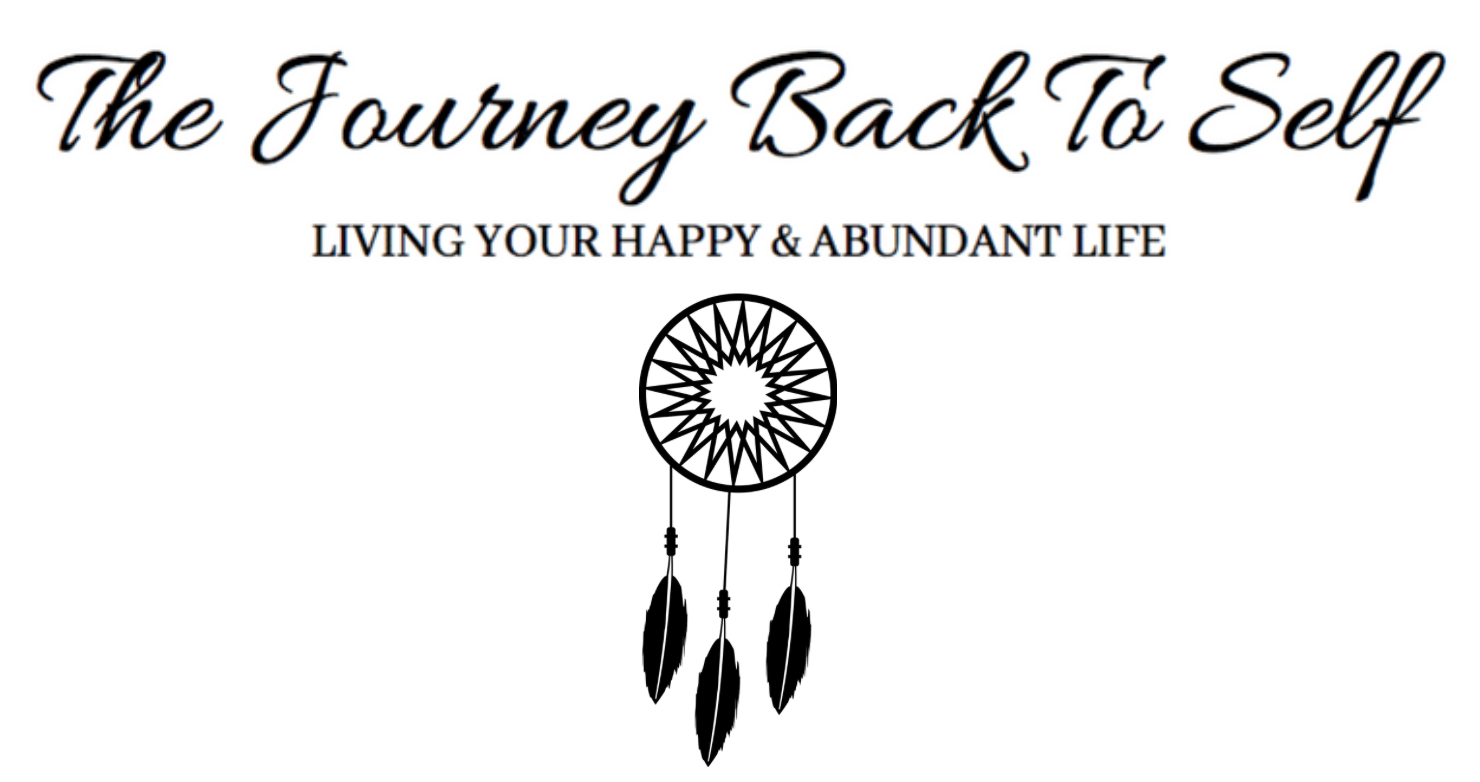The chakras are energy points connected along our spine, which serve to absorb vital energy, distributing it throughout the body, mind and spirit, and then release it to the outside.
They can manifest themselves in mental, physical or emotional aspects.
When we are not well physically or have negative thoughts and feelings, it is likely that some kind of chakra will be closed, which makes it impossible for the energy to circulate, and imbalances may arise.
ORIGIN
According to the oriental religions, such as Hinduism and Buddhism, it is these energy centers that govern our physical, intellectual, emotional and spiritual stability.
The word “chakra” comes from the Sanskrit and means “wheel”, because it is believed that these are vortices in constant movement, receiving and emitting signals of vital energy at certain points of our body.
The oldest record of the chakras comes from the Vedas, the sacred scriptures of Hinduism, which arose in the 21st century BC.
Since then, belief has been popularizing in such a way that it has crossed the barriers of Hindu culture, reaching the West.
According to the Hindus, the chakras meet and join in the Nadis, which are invisible pathways within our body, acting as conduits through which our vital energy circulates.
Each one of them influences one or more specific areas of both our personality and health.
WHY SHOULD THEY BE ALIGNED
In the rushed and stressful way in which many of us live nowadays, it’s very easy to unbalance and feed on what makes us sick, bringing mental or emotional problems, pain, disease and tiredness.
Aligning the chakras makes it possible to work out all these pains and problems that our body experiences throughout its life, because we allow the revitalization of our internal strength and the reconstruction of the body.
For example: a chakra who is in the frequency of fear causes us anxiety and discomfort when we think about it.
On the other hand, when it is in the frequency of love, wholeness, peace and joy arise in our path.

THE MAIN CHAKRAS
There are those who say that there are 32 to 88,000 chakras in our bodies. But the most certain thing is that among them there are seven main ones.
Each one associated with a color and a gland in the physical body, and responsible for governing a specific part of the functioning of our psychological body.
Meet the top 7 chakras:
1. Root chakra or first chakra
Color: red;
Element: land;
Body region: coccix;
Related to: survival, vitality and sexuality;
The basic chakra, which is red in color and located in the perineum region, is directed towards the soil, representing the connection of the human being with the planet Earth.
He is responsible for our vitality and for the most primitive instincts of the human being, for sexual impulses and for questions of survival – mainly basic needs, such as eating and sleeping.
When it is misaligned, it causes us a feeling of constant insecurity, lack of spirit or excess attachment to the material world.
2. Chakra sacral or chakra umbilical
Color: orange.
Element: water;
Body region: navel;
Related to: sexuality, emotions, sexual relationships and affections;
The orange sacral chakra is located in the Pubian region. He is responsible for maintaining our reproductive system, acting mainly on two of our strong impulses: creative and sexual, being related both to the desire for change and to pleasure.
It wields power over fertility, sexual impulses, and also our creative ability.
It is believed that in adolescence it acts in its greatest capacity. Jealousy, impotence, indecision, sexual problems and bladder issues indicate that this chakra is inbalanced.
However, when the facility for assimilating new ideas is balanced, it gains prominence.
3. Solar plexus chakra
Color: yellow;
Element: fire;
Body region: stomach;
Related to: personality, power and identity;
The solar plexus chakra is connected to the digestive system, especially the pancreas. Its element is fire and its yellow color.
Because it is located in the central region, it plays an important role in the distribution of energy throughout the body and in the communication between the mind and the physical body.
It’s also where your ego lives. When misaligned, it can make the person narcissistic and selfish, or, on the contrary, it makes them very insecure.
It also has a vital function in personality and personal power. Good leaders, for example, tend to have a good alignment of this chakra.
4. Heart Chakra
Color: green;
Element: air;
Body region: heart;
Related to: human and divine love;
The green heart chakra is responsible for energizing the circulatory and cardiorrespiratory system.
It’s considered the center of love and wisdom with the function of conducting affective relations and feelings.
So, when balanced, it helps in relationships, and it also makes us more susceptible to feeling compassion.
When it is out of balance, it can cause both emotional and cardiac or immunological problems. Joy strengthens this chakra.
5. Throat chakra
Color: celestial blue;
Element: ether;
Body region: throat;
Related to: manifestation and expression of truth;
The throat chakra is close to the throat and commands the functions of the thyroid. It’s related to our ability to communicate, whether it’s corporal or verbal.
When it’s balanced, you become a very gesticulated and expressive person.
When not in balance, it can generate difficulty in communication, insecurity or problems in the pharynx, larynx and in the other components of the region.
It can also turn someone into a person who cannot say no, and says yes without complaining, keeping everything for themselves.
6. Third-eye chakra
Color: indigo blue;
Element: ether;
Body region: forehead above the eyebrow;
Related to: intuition, connection to the world;
In the Hindust tradition, the third-eye chakra is located between the eyebrows. It is known as “the third eye,” because it can see things other than the material.
Besides being responsible for revitalizing the nervous system and also for vision, it works on the capacity for concentration and, above all, intuition.
When misaligned, it can cause dispersion, constant headaches, vision problems and nightmares. But when it reaches equilibrium, it can generate good fruit, such as concentration, fertile imagination and the capacity to reason clearly.
7. Crown chakra
Color: violet
Element: there is no;
Body region: head top;
Related to: harmony and subtle thoughts, wisdom and memory;
The crown chakra, which is violet and located on top of its head, is the most important of all because it connects us with the superior energy, the Universe.
It responds to our connection with the spiritual world, with the energies of the outside world, and also with the brain and consciousness. But to do that, all the other six chakras have to be in maximum balance.
It’s tied to wisdom and memory, and in harmony it helps the individual to have a balance between what he thinks and what he talks about.
HOW TO ALIGN THE CHAKRAS
The balance of each one of the chakras can be achieved by means of various techniques, including reiki, meditation, crystal therapy, chromotherapy, creative visualizations, with mandalas and colors.
It’s very important to know our chakras well. Only that way can we reach the balance of the physical, spiritual, emotional and mental body and find the harmony that resides within us.
